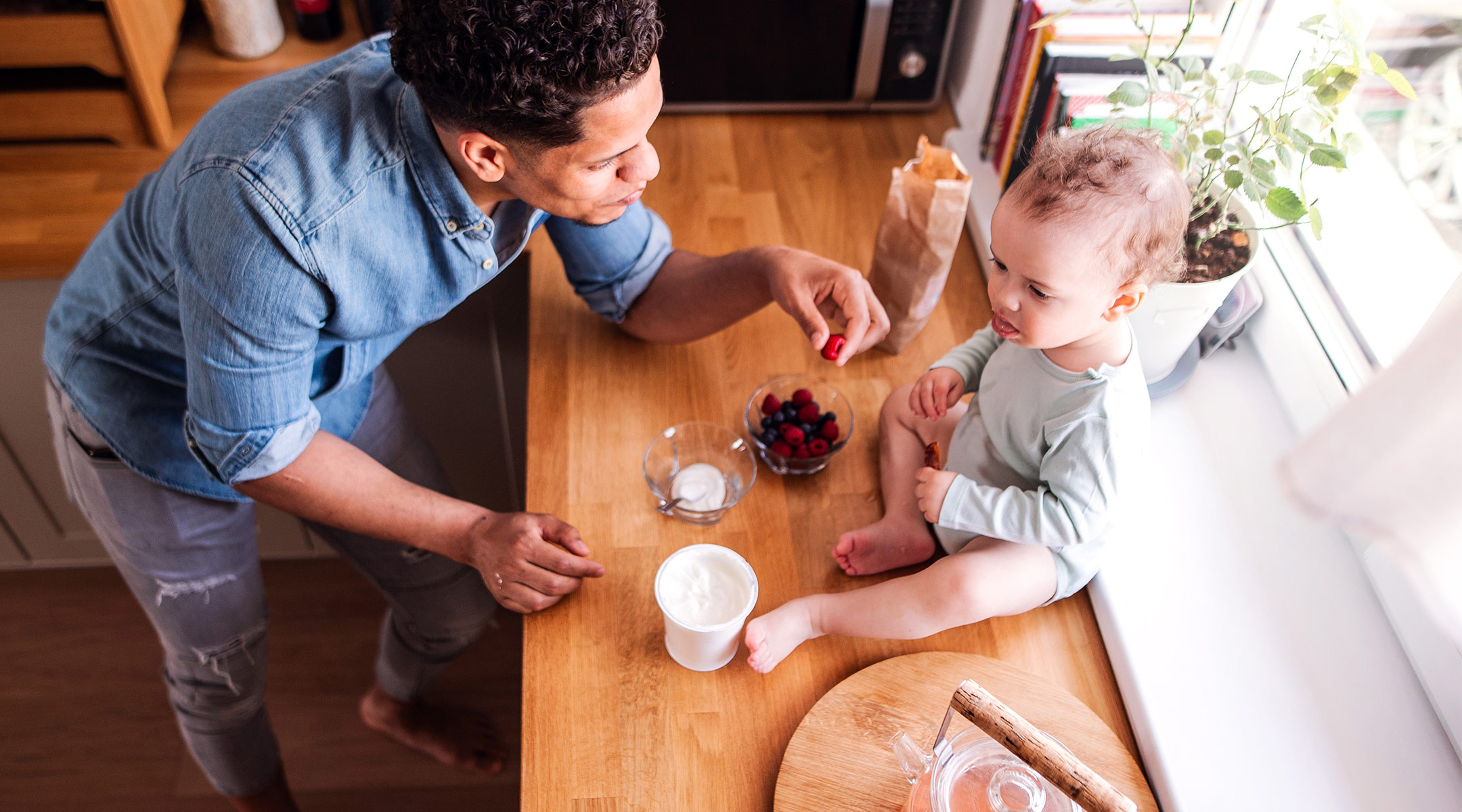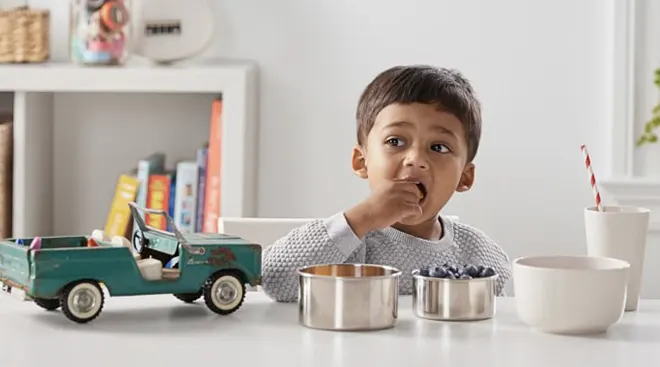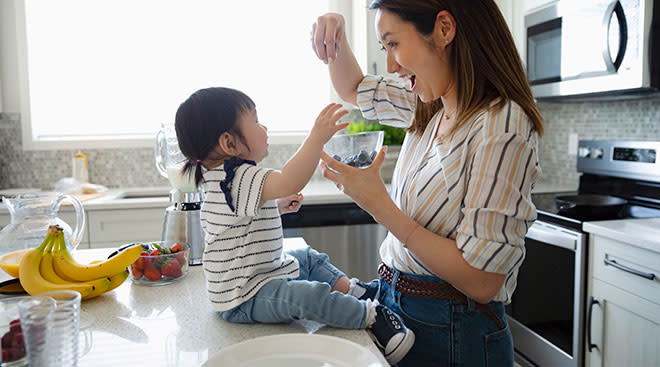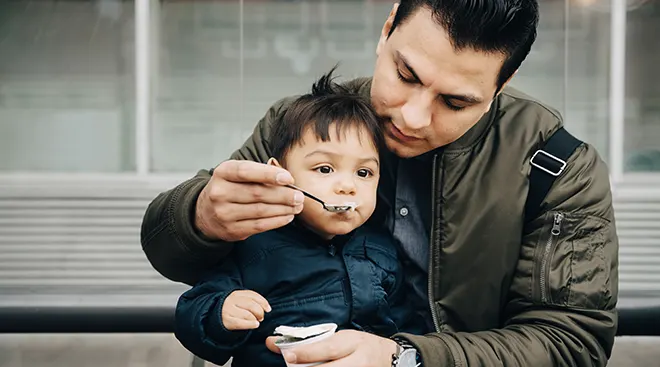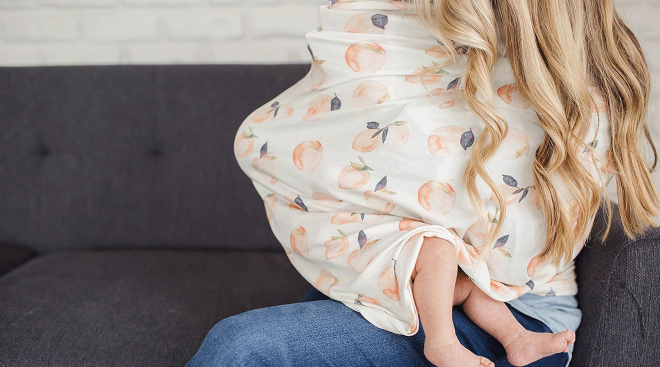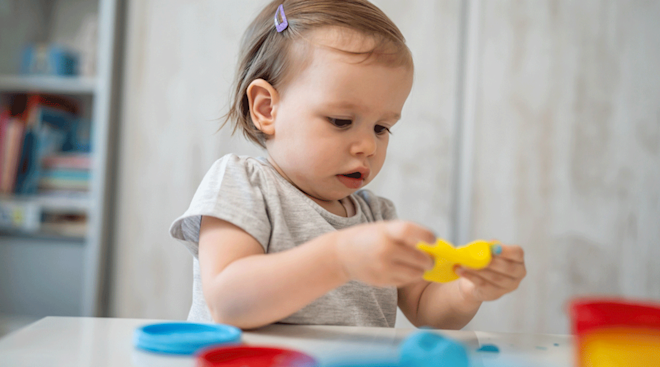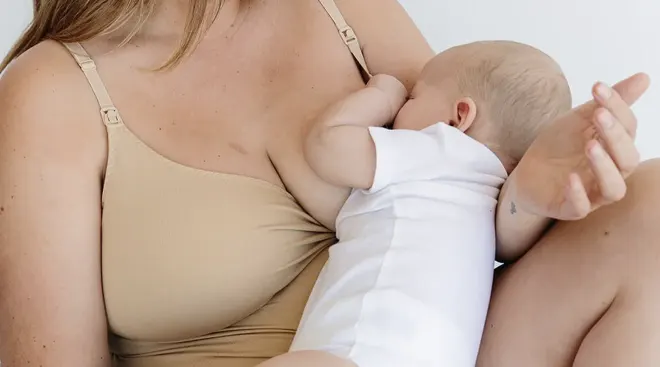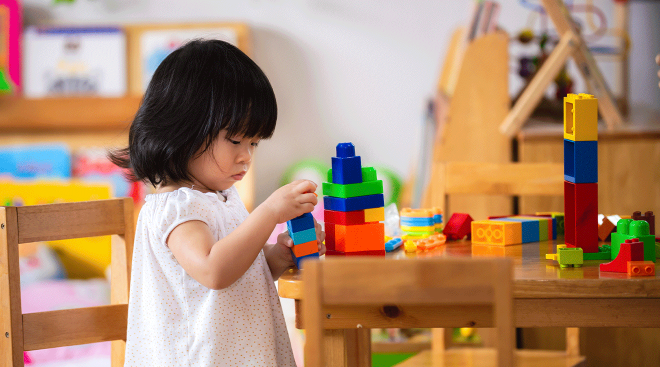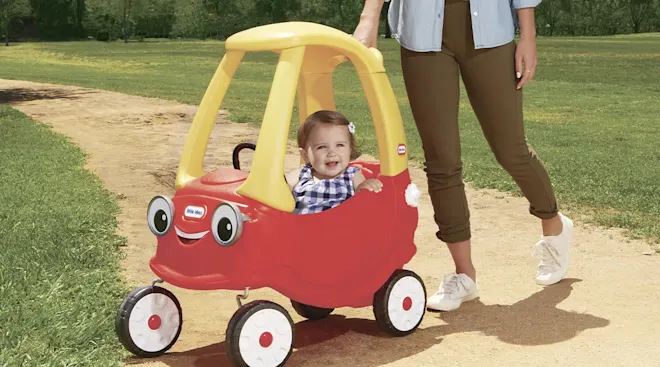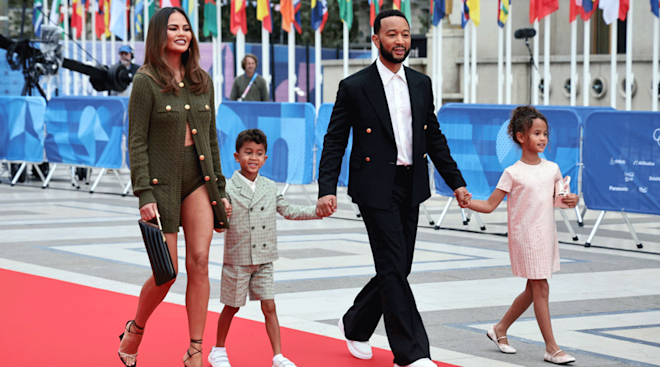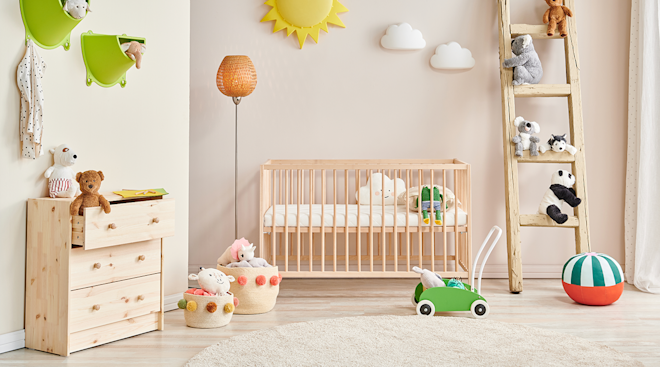Your Guide to Healthy Food for Toddlers
The first year of baby’s life was all about feeding schedules and did-they-eat-enough worries, and then the excitement (and stress) of introducing of new foods, textures and flavors to your little one. That was the easy part. You’ve now entered the toddler years, when vocal, mobile and opinionated tots wield their new-found spunk against your best-laid healthy eating plans.
“Parents often panic now because their toddler starts rejecting foods,” says Yamileth Cazorla-Lancaster, DO, a pediatrician in Yakima, Washington and host of the podcast Veggie Doctor Radio. “That’s when everyone tries to find ‘toddler-friendly’ foods so they can convince their children to eat.”
Never fear: Healthy food for toddlers is in your reach! “One of your main goals during the toddlers years is simply persistence,” says Jill Castle, RD, a registered dietitian and author of Try New Food: How to Help Picky Eaters Taste, Eat & Like New Foods. “Keep exposing your toddler to flavors—familiar and new—so they develop a wide flavor palate.” Because, honestly, the best food for toddlers is a variety of food. Yes, there are safety guidelines that all parents need to wrap their head around (more on that below), but if your overarching toddler nutrition goal is All The Good Things, you’re likely already off to a stellar start. Here, your roadmap to take you the rest of the way.
When it comes to your toddler’s diet, variety is key. But don’t get too hung up on whether they’re getting in a bunch of different food groups at every snack and meal. “I think about variety more in terms of a whole week, rather than a single meal or single day,” Cazorla-Lancaster says. “In general, toddlers get overwhelmed with too much on their plate or high chair tray at once, so it’s okay to just give two items at a time.”
Of course, toddler nutrition isn’t just about figuring out what to feed toddlers—a ton of toddler parents ask themselves, how much should a toddler eat? “Even though most toddlers are hungry every three to four hours, watch your child’s hunger cues before serving up a meal or snack, because every toddler is different,” Cazorla-Lancaster says. “It’s more important to maintain structure and routine and not to encourage all-day grazing.”
Each day, your toddler should consume roughly 40 calories for every inch of their height. That means that your 32-inch kiddo should clock an average of 1,300 calories a day, give or take, according to The American Academy of Pediatrics (AAP). Does that mean you should record each carrot stick and cheesy puff in a kid version of MyFitnessPal? Heck, no. Instead, use the following servings-per-day info from the AAP to know what types of food you should fill that cute little Paw Patrol plate with and how much. Note that a toddler portion is about one-quarter of yours.
Grains
Here we’ve got wheat, rice, oats, cornmeal and more, coming to your toddler’s plate by way of bread, pasta and oatmeal to name a few. Grains can be whole (good for you!) and refined (not good for you). The former is great for toddler nutrition thanks to its keep-you-regular fiber, B vitamins, antioxidants and trace minerals like iron and zinc. The AAP recommends that at least half of your kiddo’s grains be whole.
Servings:
6 servings a day
Bread: ¼ or ½ slice
Crackers: 1 or 2
Pasta: 4 tablespoons
Dry cereal: ¼ cup
Fruit
Fresh, canned and frozen fruit are among the best food for toddlers. Just make sure your non-fresh picks don’t contain added sugar. While any 100 percent fruit juice technically counts as being a member of the fruit group, the AAP notes that intake should be limited to, at the very most, 4 ounces daily, which is ½ cup.
Servings:
2-3 servings a day
Cooked or canned: ½ cup
Fresh: ½ piece
100 percent fruit juice: ¼ to ½ cup
Vegetables
Raw, steamed, sauteed, roasted, slow-cooked, fresh, frozen, canned—they all fit neatly under the veggie umbrella. (So does 100 percent vegetable juice.) Getting your toddler’s vegetable fix in is super-important. “Veggies tend to be bitter and a ‘learned’ flavor preference, so children need exposure to them early and often,” Castle says. Just know that raw vegetables can be a choking risk, so gradually move from grated to matchstick cuts to fun shapes.
Servings:
2-3 servings a day
Cooked: 2-3 tablespoons
Whole, raw, leafy greens: ¼ - ½ cup
100 percent vegetable juice: ¼ to ⅓ cup
Dairy
Most milk products (milk, yogurt, cheese) fall into the dairy fold. Those that don’t, like cream cheese and butter, got the boot because they no longer contain calcium. Calcium-fortified soymilk is also part of this group. Dairy is a key healthy food for toddlers, providing calcium and vitamin D to help build strong skeletons. And, pst, if you’re still dolling out full fat dairy, know that it’s okay to switch to low-fat or nonfat milk.
Servings:
2-3 servings a day
Milk: ½ cup
Cheese: ½ oz
Yogurt: ⅓ cup
Protein
Meat, poultry, seafood, eggs and soy products like tofu are all proteins. Proteins are a rich source of iron, which is instrumental in keeping red blood cells operating at full capacity. Since toddler are no longer drinking iron-fortified formula and may not be eating a lot of iron-fortified cereal, they’re at risk for iron deficiency, which makes eating protein super-important. “When figuring out which proteins to serve, I recommend parents put an extra emphasis on seafood, since its DHA and healthy fats are important for brain development too,” Castle says.
Servings:
2 servings a day
Beef, chicken, fish: 1 oz or two 1-inch cubes
Ground meat: 2 tablespoons
Egg: ½ to 1 whole
Legumes
Peas, beans, lentils and soy (hi again!) are all legumes. Even though legumes are proteins and kinda sorta vegetables, they get their very own category because they’re that important for toddler nutrition. “Legumes are high in fiber, protein and antioxidants. And as a bonus, they’re inexpensive and easy to incorporate into a lot of meals,” Cazorla-Lancaster says.
Servings:
2 servings a day
Cooked beans: 1 to 2 tablespoons
Tofu: 1 ounce
Water
While there is no magic number for how much H2O your toddler should drink, keep in mind that water and milk should always be the go-tos at this age. Water keeps digestion moving and helps kids poop. Essentially, your toddler’s body can’t function without it. Shoot for your child to drink the number of 8-ounce cups of water that’s equal to their age. That means two 8-ounce glasses of water a day for a 2-year-old.
Servings:
16 - 24 ounces a day
While finding healthy food for toddlers is your main objective, it’s also important to zero in on what foods and drinks to avoid.
Cola and Fruit Drinks
“Any caffeinated beverages or sugary beverages such as soda and fruit drinks are no-go’s,” says Castle. “And vastly limit 100 percent fruit juice.”
Sweetened Soy Milk
“If you choose to avoid or decrease dairy consumption for your toddler, choose an unsweetened and fortified plant-based milk such as soy or pea protein—and have your child drink at meal times,” Cazorla-Lancaster says. You should also avoid low-protein, plant-based milks like rice milk and almond milk, which aren’t meant to provide proper nutrition for young children. You can stick to using these milks in recipes.
Slippery Foods
Say what? Think: whole grapes, cherry tomatoes, hard candy and cough drops. All of these can easily slide down a toddler’s throat and possibly cause them to choke. That doesn’t mean toddlers shouldn’t eat grapes or tomatoes—just cut them in quarters until your kiddo is 5. (As for hard candy and cough drops, you can just avoid them entirely.)
Uncut Hot Dogs
Large pieces of meat and hot dogs are also choking hazards up to about age 5. Before serving, cut them up into one half-inch (or smaller) easy-to-chew pieces.
Whole nuts and seeds
While these foods are so good for your toddler, the choking risk outweighs the health benefit for toddlers. Wait until age 5 to safely dole out these snacks. In the meantime, crushed and chopped nuts and seeds are a-okay.
Too much peanut butter
Gobs of sticky peanut butter are super-hard for a toddler to swallow. Instead, thinly spread about 1 tablespoon on crackers or toast. (The crunchy variety always gets a hard no.) Sticky foods like gum and marshmallows are also best to nix.
Parents are always in need of new, fun and healthy food ideas for toddlers. We get it: It’s hard to keep thinking of meals—especially meals that support toddler nutrition and appeal to your toddler’s palate. Take Castle’s advice and start with a protein source (which includes legumes), add a fruit or vegetable (or both), and then fill in the holes with whole grains and dairy.
And know your audience! “Toddlers are naturally curious, so making food look interesting and appealing is one way to entice exploration and eating,” says Castle. So go ahead and turn the contents of their plate into a smiley face, or use cookie cutters to make cat-shaped sandwiches. Toddlers also love doing things themselves, so cut everything into healthy finger foods for toddlers. “Literally, cut food in the shape of a finger! Or one-bite or two-bite nuggets,” says Castle. “This allows independent eating for toddlers who really want autonomy.” To further help your toddler’s I-do-it-myself tendencies, offer safe toddler-size utensils; add side dips they can dunk their finger foods into, and teach your kiddo how to spread and assemble food on their own. If they made it, they’ll (likely) want to eat it.
Want some specific meal suggestions? Here’s our meal-by-meal tip sheet of healthy food ideas for toddlers.
Breakfast Ideas for Toddlers
After a good night’s rest (fingers crossed!), your toddler will likely wake up ready to fill their belly empty tummy. That means hungry mornings are a great time to introduce new foods. Strike while the belly’s rumbling with these healthy finger foods for toddlers:
- Peanut butter on 100 percent whole grain toast, topped with mashed fruit. (Be sure to spread the peanut butter thinly!)
- Egg in a (100 percent whole grain) Hole with sliced berries on the side
- DIY yogurt bar: Offer a serving of plain yogurt with some fun add-ins, like mashed ripe banana, unsweetened applesauce, pumpkin puree, crumbled graham crackers and fresh fruit
- Quesadilla with cheese, chopped spinach and beans
- Yogurt smoothie with frozen fruit and nut butter
- Tofu scramble with cheese, potato and spinach. (Use a potato masher to get your extra-firm tofu scramble-ready. Add 2 teaspoons of turmeric to amp the flavor and turn your “eggs” yellow)
- Whole grain pancakes topped with plain yogurt and fruit, with a couple cubes of diced ham on the side
- Mashed roasted sweet potato spread on whole grain toast, sprinkled with cinnamon. Add a hard or soft-boiled egg (sliced or cubed) to get the protein in
- Oatmeal made with milk and topped with fruit. Slip in more nutrition and flavor by adding a few spoonfuls of unsweetened applesauce or some roasted, mashed sweet potato
- Grilled ham and cheese on 100 percent whole grain bread, cut into easy-grip strips to help your kid practice their pincer grip
- Crustless mini quiches. Chop any veggies to toddler-friendly sizes, saute until tender crisp, pour in (sprayed) muffin tins followed by eggs. Bonus: These last about five days in the refrigerator.
- Avocado toast topped with diced tomatoes. Try adding a half hard boiled egg (sliced or cubed) for protein
Lunch Ideas for Toddlers
Here’s a secret: When it comes down to it, there are no “breakfast” foods and “lunch” foods—there are only foods. And the best food for toddlers is any healthy food they’ll eat! So in addition to the above ideas, consider these as well.
- Whole wheat pasta with chunky marina. Puree legumes or dump in white beans to “beef up” your store-bought (low-sugar) sauce
- Fish sticks with tomato and mozzarella salad. Think beyond tartar sauce and consider options like tzatziki, marinara, ketchup or ranch dressing. (And make sure those cherry tomatoes are quartered!)
- Quesadilla with broccoli, beans and cheese. Use steamed and chopped broccoli florets
- Deconstructed taco. Plate a bit of ground beef, shredded cheese, black beans and diced tomatoes along side a few strips of warm tortillas
- Snack plate! Put out some hummus for dipping, matchstick veggies slices, cubed cheese, turkey pepperoni and some whole grain crackers
- Rice and beans with salsa
- Tuna salad on whole wheat crackers topped with tomato
Dinner Ideas for Toddlers
We know you’re inclined to make two meals: One for your toddler and one for the grown-ups. Try your darndest not to! “It’s less exhausting, for one,” says Castle. “Plus, getting your child on ‘family food’ quicker is great for nutrition, eating skills and learning to navigate new foods.” Here’s how to morph your meals into healthy food for toddlers.
- DIY pasta salad. Make a pot of whole wheat pasta for the whole family and have all of the fixings on the side, including items like cubed cheese, quartered cherry tomatoes, roasted chickpeas, sliced or cubed hard boiled eggs; grilled chicken; dressing and more
- Chicken tenders with roasted sweet potatoes and apples. Use whole wheat panko to bread your tenders. And make extra: These can turn into taco add-ins, chicken parm and more
- Meatballs, whole grain pasta and veggies. Pulse some carrots, spinach and onion in a food processor and add them to your meatball recipe
- Sheet pan anything! One of the many beautiful things about this type of meal is that everything is cooked together, but separate, so it’s already deconstructed. Foods to include: beef fajitas; chicken, veggies and sweet potatoes; gnocchi and veggies
- Lettuce wraps and stir-fried broccoli. Use ground beef or chicken, an Asian inspired sauce, shredded carrots and bell peppers and Bibb or butter lettuce for easy filling
- Black bean burgers with avocado, tomato and watermelon salad. Grown-ups eat it as a sandwich; toddlers eat it with all the toppings—like tomato, lettuce and cheese—on the side
- Salmon cakes with yogurt sauce and salad. If your toddler isn’t crazy about salad, simply deconstruct it. (Psst: You can use canned salmon to make these.)
Snack Ideas for Toddlers
Snacks often get vilified, but the truth is, toddlers need snacks! “Toddlers have small tummies and can only hold a small amount of food at a time,” explains Castle. “At the same time, they have high nutrient needs for growth and development, so they have to eat frequently.” That means two to three snacks a day are a must. But instead of simply offering one item, try to eek in at least two food groups into each snack. Mix and match from the list below.
- Fruit. Thinly sliced apples, peaches, nectarines or pears; banana; sliced or smooshed cherries, grapes or plums; clementines (sectioned); cubed or balled mellon; unsweetened applesauce. Plain yogurt and low-fat cream cheese make toddler-friendly fruit dips.
- Veggies. Cubed avocado; matchstick-sliced peppers, carrots and cucumbers; blanched broccoli and cauliflower. Hummus, guacamole, salsa and more can be fun to dip veggies in.
- Dairy. Full-fat plain yogurt; low-sugar drinkable yogurt and yogurt sticks; cottage cheese; cubed or grated cheese
- Protein and legumes. Hard-boiled egg (sliced or cubed); tuna (on whole wheat crackers); low-sodium deli meat roll up; hummus (as a dip or as a spread); black bean dip; thinly-spread nut butter
- Grains. Low-sugar whole grain cereal; quinoa puffs; brown rice crackers and cakes; mini whole-grain waffles; whole grain Graham crackers; whole grain toast (topped with things like nut butter, melted cheese, hummus or mashed avocado
Expert bios:
Yamileth Cazorla-Lancaster, DO, MPH, MS, FAAP, is a pediatrician based in Yakima, Washington and affiliated with Yakima Valley Memorial Hospital. She’s also the host of the podcast Veggie Doctor Radio, where she talks about plant-based nutrition and ways to form healthy habits to live your best life.
Jill Castle, RD, is a Connecticut-based dietitian and pediatric nutritionist with more than 27 years of experience. She’s served as a pediatric dietician at Massachusetts General Hospital and Boston Children’s Hospital, and is the author of the 2019 book Try New Food: How to Help Picky Eaters Taste, Eat & Like New Foods.
Updated January 2020
Please note: The Bump and the materials and information it contains are not intended to, and do not constitute, medical or other health advice or diagnosis and should not be used as such. You should always consult with a qualified physician or health professional about your specific circumstances.
Plus, more from The Bump:
Navigate forward to interact with the calendar and select a date. Press the question mark key to get the keyboard shortcuts for changing dates.
































